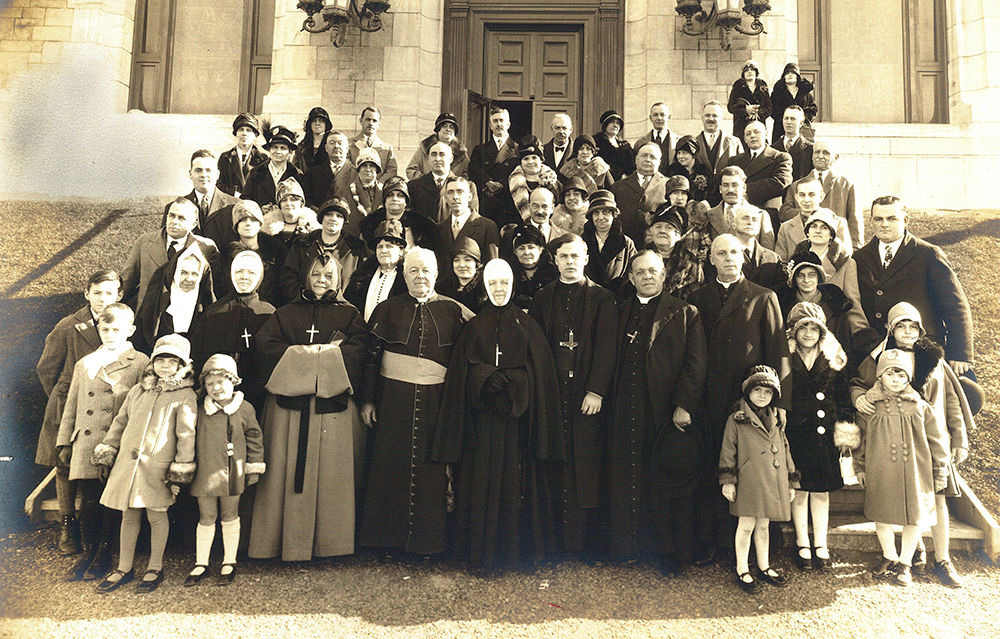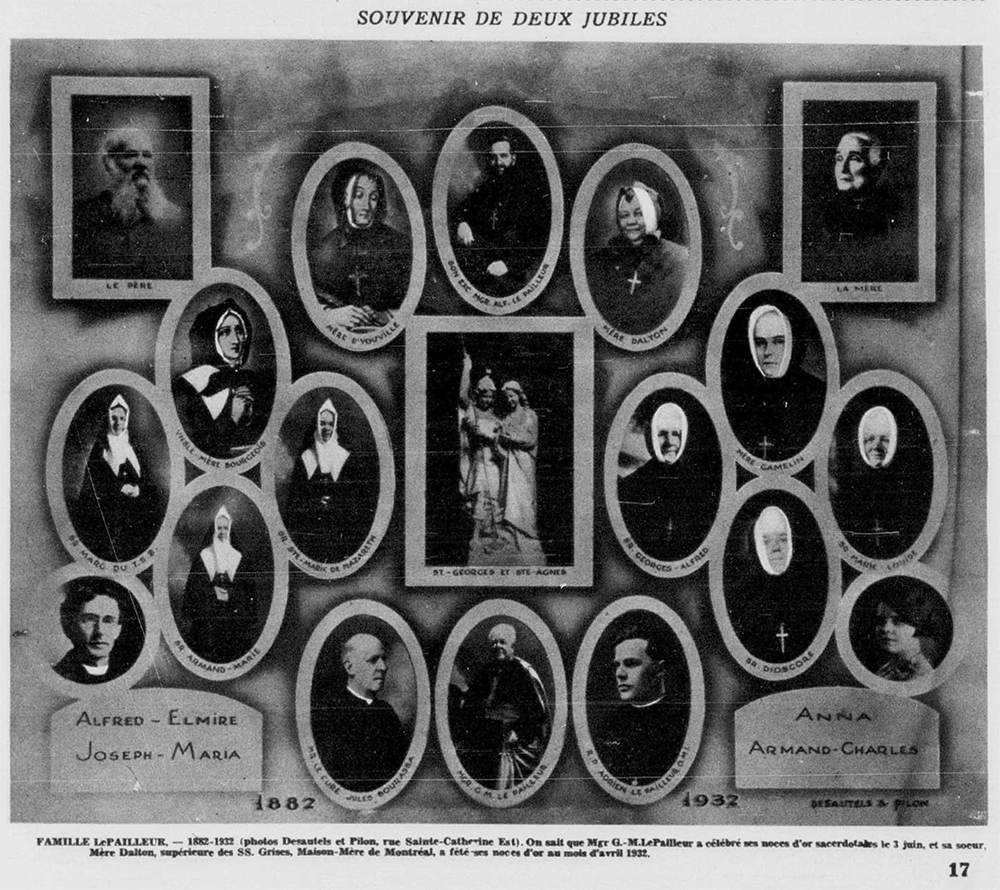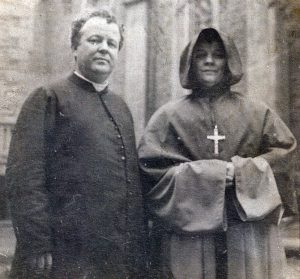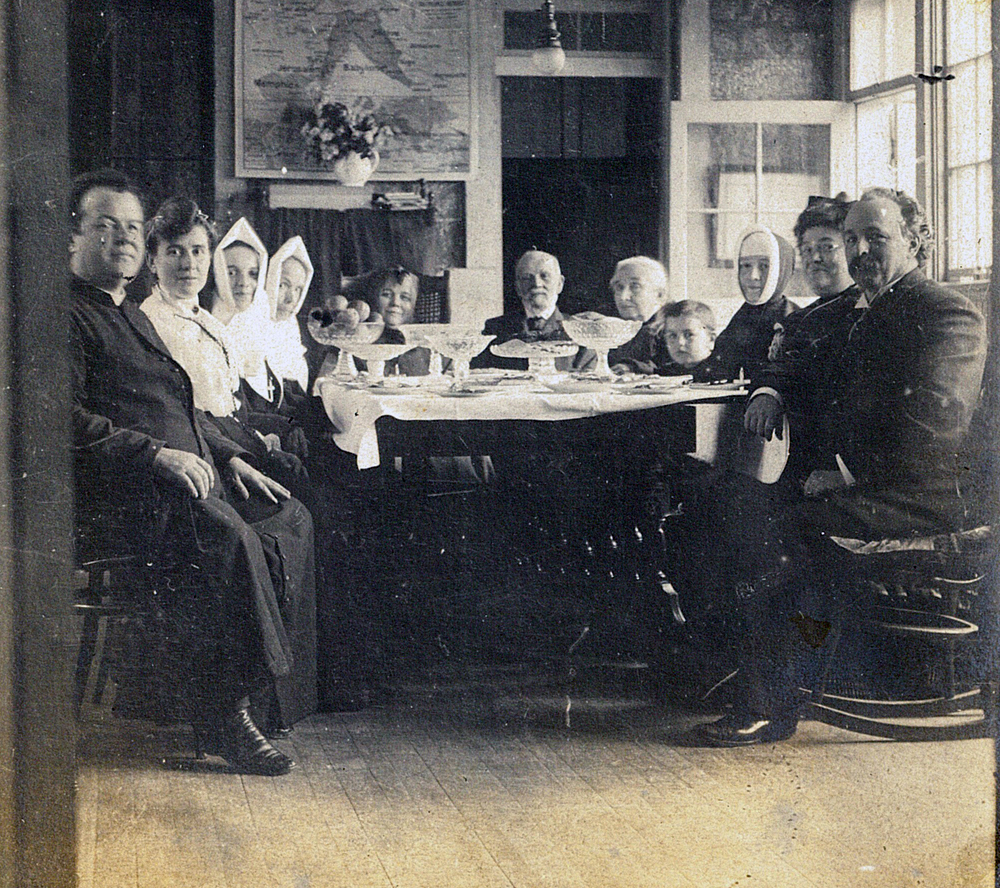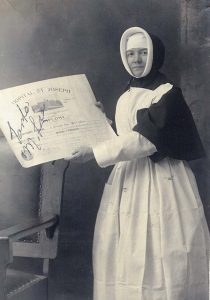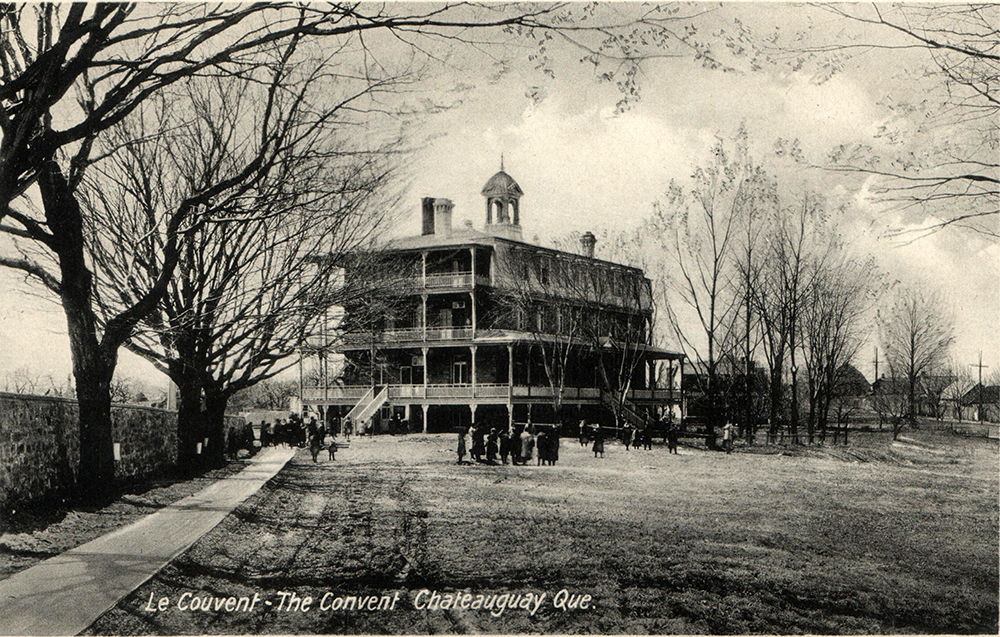A story of devotion
Over two centuries of religious careers
From the 18th to the middle of the 20th century, religion was omnipresent in Quebec. Religious communities were committed to many spheres of life such as teaching, health, charity or simple devotion and supported parishioners.
The LePailleurs, fervent devotees, were governed by their Christian spirit. They invested in their communities and even adopted children. Three generations of the family saw many young men and women enter religion.
Initially, four men joined the Orders. Three of them really stood out. The first, Canon Jules-Alcibiade (son of notary François-Georges), co-founded the Institute of Restorative Daughters of the Divine Heart in 1929. Its mission was to help children.
The second, bishop Georges-Marie LePailleur, was priest in four Montréal parishes, canon of several organizations and apostolic protonotary, somewhat following in the footsteps of his father and grandfather, notaries Alfred-Narcisse and François-Georges. During his career, he created the Cimetière de l’Est in Montréal and had the Nativité-de-la-Sainte-Vierge-d’Hochelaga church rebuilt after it had been destroyed by fire. But it is mostly his social and community involvement that marked the Montréal landscape. He founded the Caisse d’économie scolaire in the parish of Saint-Enfant-Jésus, which helped young people to save for their future. He also created the Order of the Knights of Carillon in 1930, whose purpose was to defend national and religious interests. Finally, he established the organization La goutte de lait, which aimed to improve hygiene conditions and nutrition of young children in order to reduce the infant mortality rate.
His nephew Alfred LePailleur also decided to join the Orders as a member of the Congregation of Sainte-Croix. Despite requests from his relatives to remain in the country, Alfred became the first residential bishop of a Canadian foreign mission in Chittagong, India (now part of Bangladesh), in 1928. He spent 12 years at the mission and even learned the Bengali language, which helped him to better communicate with his new parishioners and to translate the Holy Scriptures for them. He remained in Bengal until 1949.
As for the women, 14 decided to take their solemn vows. They were part of five different communities, including the Congregation of Notre-Dame and the Sœurs de la Charité (the Grey Nuns), who were very involved in Châteauguay. They became teachers or nurses and took care of the less fortunate and underprivileged. Many of them progressed in the hierarchy of their organization and held positions such as reverend mother or mother superior.
Once again, the bourgeois origins and the education of the family had enabled the LePailleurs to rise up the ranks of society, and even of religion. Although it was common for some members of a family to choose the ecclesiastical path, it was rather rare for so many members of the same family to do so.


